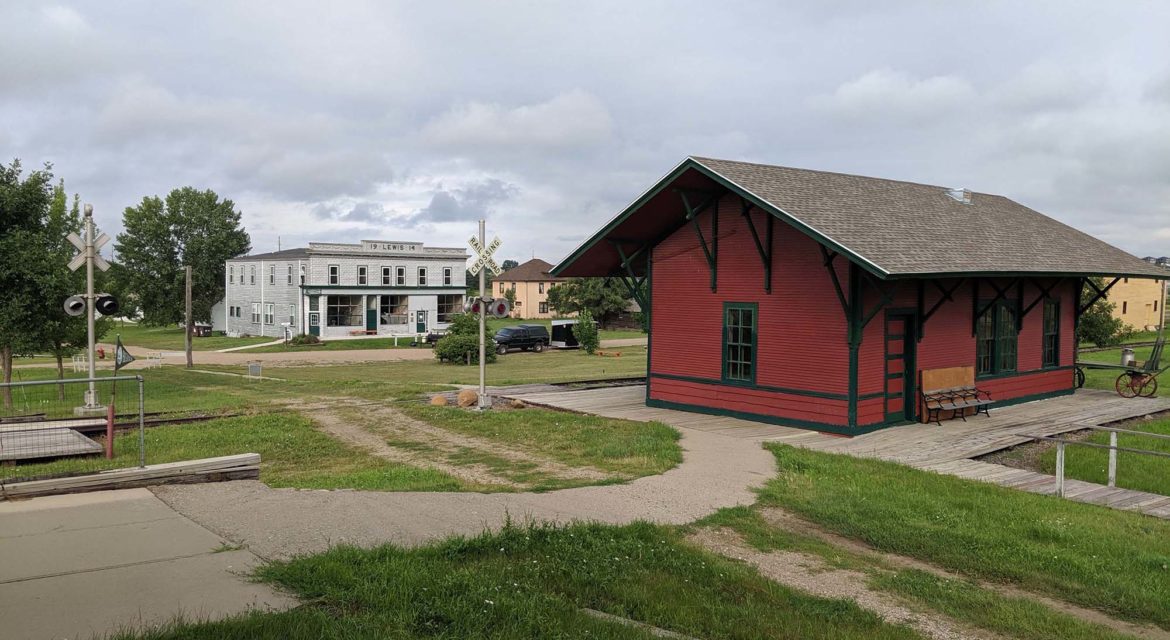 The structures as well as the stories of the people who built the towns and communities of Bismarck, North Dakota, are on full display in Buckstop Junction. This historic town contains actual buildings dating from 1875 to 1935 that were moved to this site. These buildings with traceable histories offer visitors a feel for the atmosphere of the Missouri River Valley during the turn of the century.
The structures as well as the stories of the people who built the towns and communities of Bismarck, North Dakota, are on full display in Buckstop Junction. This historic town contains actual buildings dating from 1875 to 1935 that were moved to this site. These buildings with traceable histories offer visitors a feel for the atmosphere of the Missouri River Valley during the turn of the century.
To illustrate the history and significance of the structures on display at Buckstop Junction, Lein School #2 was built in 1906, while the Yegen Store was built in 1877. The Sterling Depot was built in 1885 and the Bethel Lutheran Church was built in 1916. Other early buildings include a Post Office, bank, barber shop, mine camp, farm museum, the Gellner Home (Germans from Russia), claim shack, Northern Pacific caboose and the Swedish Engstrom home.
The historical significance of these buildings is one of the reasons that events like Old Settlers’ Day/Corn Feed as well as group tours are able to take place in the location on a regular basis. Guides tours of the historic buildings happen on a recurring basis, while special tours and photography sessions have a premium price associated with them. The vintage shop has North Dakota collectibles, toys, vintage jewelry, Christmas items, locally handcrafted items and more available for purchase.
However, these opportunities are specifically limited by the operating times of Buckstop Junction. The site is only open for a handful of hours one day a week, and while the site can be booked for special events at other times, that limitation prevents many people from engaging with the history and culture that could otherwise be attracting audiences from across the city and state.

 Buckstop Junction is said to be the little old town that never was, but what’s preventing it from being so much more is due to the limitations that have been imposed on it rather than because of the way in which both residents and tourists could otherwise engage with the location. The monumentous potential that Buckstop Junction contains demonstrates the cultural and economic potential of such sites that could be realized in countless ways.
Buckstop Junction is said to be the little old town that never was, but what’s preventing it from being so much more is due to the limitations that have been imposed on it rather than because of the way in which both residents and tourists could otherwise engage with the location. The monumentous potential that Buckstop Junction contains demonstrates the cultural and economic potential of such sites that could be realized in countless ways.

